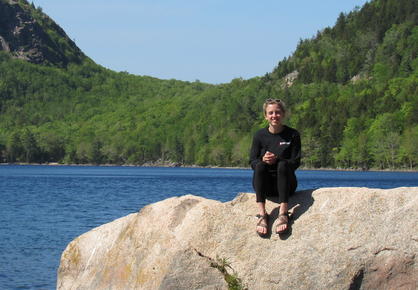|
by Vanessa Lopez
My work this past semester with the Critical Food Studies Lab has been focused mainly on food pantries throughout the state of Indiana. This work derives from my colleague, Hannah Wilson, who is taking a more comprehensive lens at food insecurity in Indiana. Other lab members and I have collected food pantry data via phone surveys in order to verify, update and improve a list started by Purdue Extension. The importance of this is to collect data on certain restrictions a food pantry may have, their hours of operation, what kind of items are provided to families, and if they have a choice as to what they receive. This data can also be interpreted to further investigate what kind of items are in high demand by clients and how pantries receive their food. An interesting issue that I learned when working on this project, was the lack of food banks for smaller food pantries throughout the state of Indiana. This came about when speaking to Ray Rodarte, leader of the Grant County Rescue Mission. When I spoke with Rodarte, he explained that a common problem food pantries face is a lack of access to food banks. This is particularly more difficult for smaller pantries that run out of church basements. Ray stated that this was the main reason they switched over from operating as a food pantry to a food bank in Grant County. This way they are able to help provide food donations for other pantries in the area. The reason why there is a lack of access to food banks is that food banks have not allowed for more food pantries to work with them according to Rodarte. Food banks such as Midwest and Gleaners have kept the same client list for a couple of years now. This issue is something that could help initiate a new movement that encourages new food banks to start up or for food banks to change their client list more often. In addition to working with Hannah, I have also begun to design a project of my own. With the help of Angela Babb, Co-Director of the Lab, I have commenced research on the relationship between migrant work and health. Poor health may be due to being exposed to pesticides over long periods of time. Having long exposure to these toxins causes diseases and even affects their children's health, in some cases leading to birth defects or delayed cognitive development. Currently, I am in the process of seeing what human rights organizations such as the Farmer Labor Organizing Committee and Agricultural Justice Project are doing in Indiana, to observe if they provide any help to migrant laborers and farmers that help them understand the chemicals they are exposed to. The end goal for this project is to help me collect all the data necessary that would allow me to present a research project proposal to a graduate program or organization that I could collaborate with after completing my undergraduate degree at Indiana University.
0 Comments
 by Hannah Davis My research with the Critical Food Studies Lab over the past year has primarily consisted of collecting and analyzing historical data on agriculture in Indiana. These data come from the USDA’s Census of Agriculture. Approximately every five years, the census collects information about farmland, farmer demographics, crop and livestock production, and the associated economic costs and gains. During the fall semester, I gathered data on the production of specialty crops, namely fruits, vegetables and nuts. I used these data in tandem with a list of all farmers’ markets in the state, collected by Kassandra Leuthart. My goal was to determine whether there exists a correlation between specialty crop production and the existence of farmers’ markets in Indiana at the county level. Through statistical analysis, I concluded that that relationship does not exist. What I found was simply that crop production has decreased overall in Indiana, while farmers markets continue to grow in popularity. This implies that the emergence of farmers’ markets does not rely on an increase in local specialty crop production. This semester I collected data on the age, sex and race of farm operators in Indiana. I am using this information to perform statistical and spatial analysis that will help food scholars understand the historic and geographic patterns that exist in these demographic data. So far, I have found an increase in the average age of farmers since the 1980s. I have also seen an increase in the number of female and racial minority farmers starting around the 1990s. These numbers reveal that farming in Indiana has become more diverse in the past few decades, albeit by a relatively small amount. Using mapping software in my analysis will allow me to look at patterns both temporal and spatial. The insights gleaned from this research will provide food scholars with a better picture of who manages farmland in Indiana, and where they are located. I am also currently working with Green Camino, a local compost collection company. Green Camino collects and composts household food waste, helping Bloomington residents divert their organic waste from traditional waste streams and reduce their carbon footprint. Work that Hannah Gruber and I performed using GIS helped the company match their existing customer addresses to their corresponding city sanitation route, which will allow the company to plan their future pickup routes in coordination with trash and recycling collection. It was rewarding to be able to use my spatial analysis skills to do work that aided a local business. I hope to continue to collaborate with Green Camino to do surveying and story mapping work that will help them expand their customer base. |
AuthorSThis blog features the current work of CFS Lab researchers in their own words. Archives
October 2021
Categories |
 RSS Feed
RSS Feed
